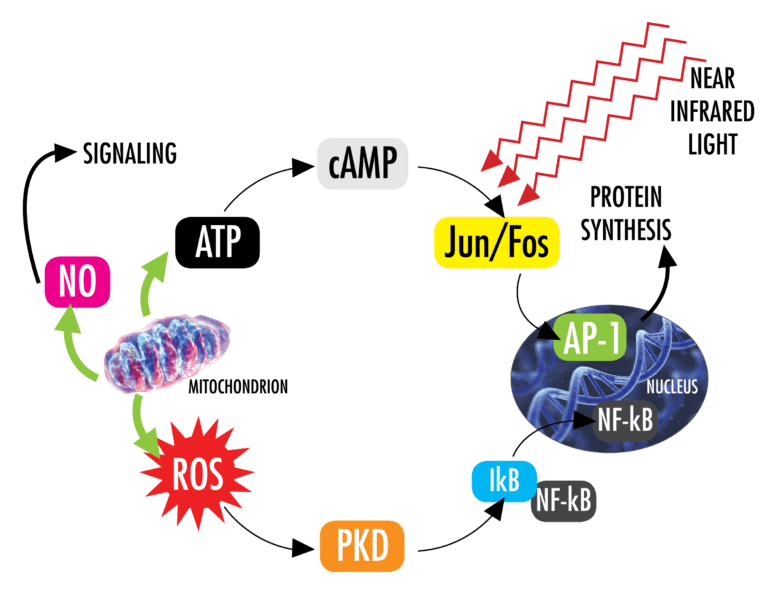In this article, you will discover the remarkable potential of photobiomodulation and its ability to harness the power of light for therapeutic purposes. Photobiomodulation, a non-invasive procedure, utilizes low-level laser therapy to stimulate cellular activity and promote healing within the body. By exploring the benefits and applications of this cutting-edge technology, you will gain a deeper understanding of how photobiomodulation is revolutionizing various fields, from medical treatments to anti-aging solutions. Get ready to unlock the extraordinary possibilities of harnessing the power of light for your well-being.
The Power of Photobiomodulation
Photobiomodulation is a remarkable therapy that utilizes light energy to promote healing and relief from various health conditions. This article will provide a comprehensive understanding of photobiomodulation, explore its benefits, discuss different types of photobiomodulation devices, delve into its clinical applications, highlight safety considerations, and examine future perspectives and case studies.
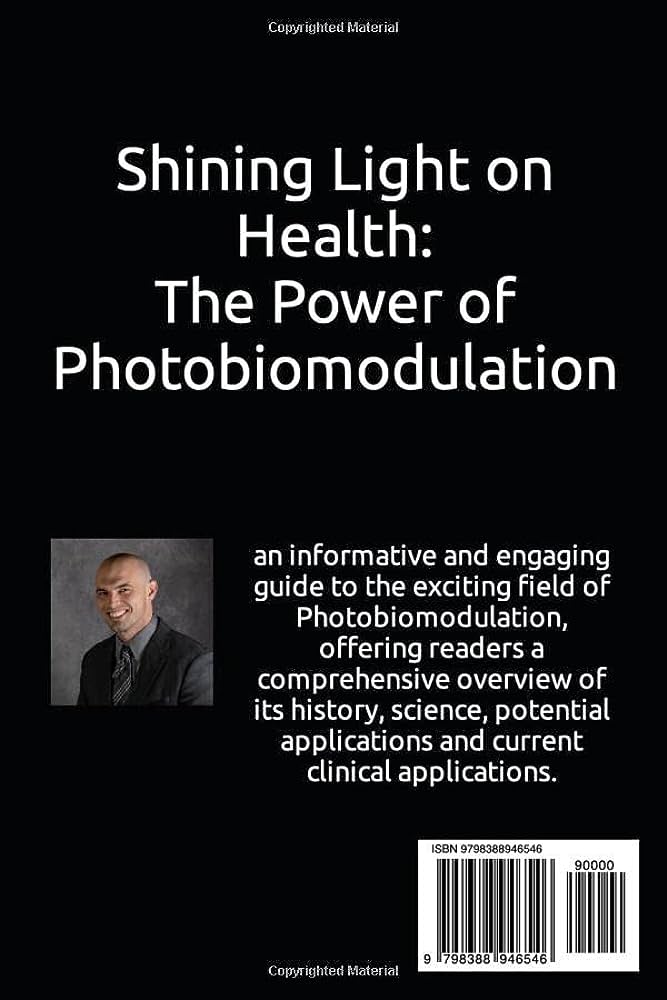
This image is property of Amazon.com.
1. Understanding Photobiomodulation
1.1 Definition
Photobiomodulation, also known as low-level light therapy or red light therapy, is a non-invasive and non-thermal treatment that involves the application of specific wavelengths of light to the body. This therapeutic approach harnesses the power of light to stimulate cellular activity, enhance tissue repair, and provide pain relief.
1.2 Historical Background
The concept of photobiomodulation dates back thousands of years, with early civilizations recognizing the healing properties of sunlight. Ancient Egyptians, for example, used sunlight to promote wound healing. However, the scientific understanding of photobiomodulation started to emerge in the late 20th century, with groundbreaking research by scientists such as Dr. Endre Mester, who discovered the therapeutic effects of low-power lasers on hair growth.
1.3 Mechanisms of Action
Photobiomodulation works by triggering biochemical reactions within cells, leading to a cascade of therapeutic effects. The specific wavelengths of light used in photobiomodulation penetrate the skin and get absorbed by the mitochondria, the energy-producing powerhouses of the cell. This absorption stimulates the production of adenosine triphosphate (ATP), which provides energy for cellular processes. Additionally, photobiomodulation promotes the release of nitric oxide, a molecule that enhances blood circulation and reduces inflammation. These mechanisms of action ultimately promote tissue repair, reduce pain, and improve overall cellular function.
2. Benefits of Photobiomodulation
Photobiomodulation has been widely studied for its numerous benefits across various health domains. Let’s delve into some of its remarkable advantages:
2.1 Pain Management
One of the most significant benefits of photobiomodulation is its ability to alleviate pain. By reducing inflammation and promoting tissue repair, photobiomodulation can provide relief from chronic pain conditions, including arthritis, fibromyalgia, and neuropathic pain.
2.2 Wound Healing
Photobiomodulation has shown great promise in enhancing the healing process of wounds, both acute and chronic. The stimulation of cellular activity, improved blood circulation, and reduced inflammation contribute to faster and more efficient wound healing.
2.3 Skin Rejuvenation
The use of photobiomodulation for skin rejuvenation has gained popularity in recent years. By stimulating collagen production and improving blood flow to the skin, it can reduce the appearance of fine lines, wrinkles, and age spots, resulting in a more youthful and radiant complexion.
2.4 Hair Growth Stimulation
For individuals experiencing hair loss or thinning hair, photobiomodulation offers a non-invasive solution. By increasing blood circulation and stimulating hair follicles, it can promote hair growth and improve hair density.
2.5 Neurological Conditions
Emerging research suggests that photobiomodulation may have potential benefits for neurological conditions such as Alzheimer’s disease, Parkinson’s disease, and traumatic brain injuries. By promoting neuroprotection, reducing inflammation, and enhancing cellular function, it holds promise as a complementary therapy for these complex conditions.
2.6 Sports Performance Enhancement
Athletes and fitness enthusiasts can benefit from photobiomodulation to enhance their performance and expedite recovery. By reducing muscle fatigue, accelerating tissue repair, and reducing oxidative stress, it can help improve athletic performance and prevent sports-related injuries.
3. Photobiomodulation Devices
Various devices are available for photobiomodulation therapy. Let’s explore the two main categories:
3.1 Laser Therapy
Laser therapy involves the use of focused beams of light to deliver precise doses of energy to the tissue. Within laser therapy, there are different types and intensities:
3.1.1 Red and Infrared Lasers
Red and infrared lasers are commonly used in photobiomodulation due to their ability to penetrate the skin and reach the target tissues. Red light (wavelength around 630-670 nanometers) is primarily used for superficial conditions, while infrared light (wavelength around 800-1000 nanometers) can penetrate deeper tissues.
3.1.2 Low-Level Laser Therapy (LLLT)
Low-Level Laser Therapy (LLLT) involves the use of lasers with low power, typically less than 500 milliwatts. LLLT is commonly used in various clinical applications, including pain management, wound healing, and cosmetic treatments.
3.1.3 High-Intensity Laser Therapy (HILT)
High-Intensity Laser Therapy (HILT) refers to the use of lasers with higher power, typically above 1 watt. HILT is often utilized in sports medicine and rehabilitation settings to target deeper tissues and promote tissue repair.
3.2 Light-Emitting Diode (LED) Therapy
Light-Emitting Diode (LED) therapy utilizes an array of LEDs to deliver light at specific wavelengths. LEDs are often more affordable and practical for home use. LED therapy is commonly used for skin rejuvenation, pain management, and hair growth stimulation.
4. Clinical Applications of Photobiomodulation
Photobiomodulation has a wide range of clinical applications. Let’s explore some of the key areas where it has shown therapeutic efficacy:
4.1 Pain Management
Photobiomodulation has been extensively studied for its pain-relieving properties. It has shown promising results in managing various types of pain, including musculoskeletal pain, neuropathic pain, and post-operative pain.
4.2 Arthritis and Joint Disorders
Arthritis and joint disorders can significantly impact individuals’ quality of life. Photobiomodulation can provide relief from pain and inflammation associated with conditions such as osteoarthritis, rheumatoid arthritis, and temporomandibular disorders.
4.3 Post-Surgical Recovery
After undergoing surgery, the body needs time to heal and recover. Photobiomodulation can accelerate healing, minimize scar tissue formation, and reduce post-operative pain, allowing individuals to recover more quickly and comfortably.
4.4 Dental and Oral Health
Photobiomodulation is increasingly being utilized in dentistry and oral health. It can alleviate the discomfort associated with dental procedures, promote healing after oral surgeries, and even aid in the treatment of conditions such as temporomandibular joint disorder (TMJ) and periodontal disease.
4.5 Acne Treatment
Acne is a common skin condition that can have a significant impact on self-esteem. Photobiomodulation can reduce acne inflammation, destroy acne-causing bacteria, and promote skin healing, making it an effective adjunctive treatment for acne-prone individuals.
4.6 Cognitive Function
Emerging research suggests that photobiomodulation may have positive effects on cognitive function. It may improve memory, attention, and overall cognitive performance, making it a potential therapy for conditions such as Alzheimer’s disease and age-related cognitive decline.
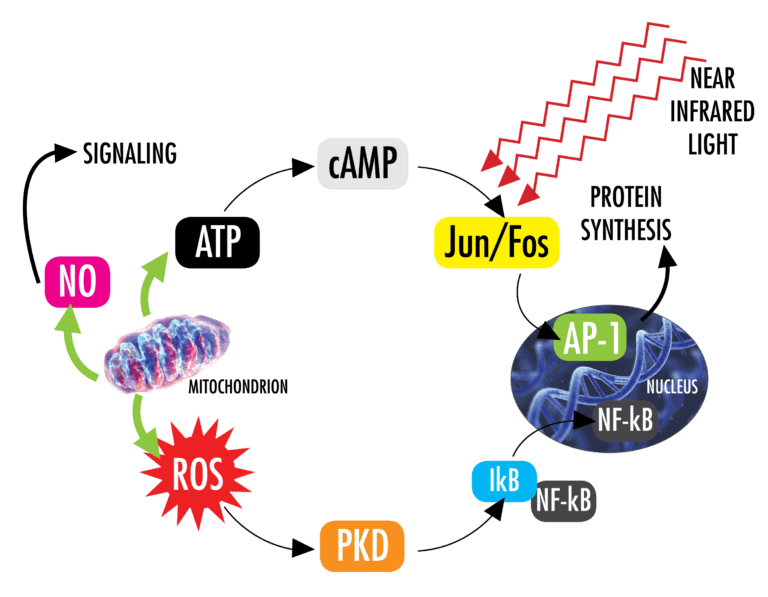
This image is property of lightforcemedical.com.
5. Safety and Side Effects
Photobiomodulation is generally considered safe and well-tolerated. However, it is important to consider the following safety considerations:
5.1 Non-Invasive and Non-Thermal
Photobiomodulation is a non-invasive therapy that does not involve the use of heat. This means there is no risk of burning or tissue damage when applied correctly.
5.2 Eye Protection
To avoid potential eye damage, appropriate eye protection should be worn when using photobiomodulation devices. The eyes are particularly sensitive to certain wavelengths of light, and direct exposure can cause harm.
5.3 Proper Dosage and Treatment Guidelines
It is crucial to follow proper dosage and treatment guidelines when utilizing photobiomodulation. The duration, frequency, and intensity of treatment should be carefully calibrated to ensure optimal therapeutic benefits without potential side effects.
5.4 Rare Side Effects
Although rare, some individuals may experience minor side effects such as temporary skin redness, itching, or mild headaches. These side effects typically subside quickly and are transient in nature.
6. Future Perspectives and Research
Photobiomodulation is a rapidly evolving field with exciting future prospects. Here are some key areas of interest:
6.1 Advancements in Photobiomodulation Technology
Ongoing research and development efforts are focused on improving the efficacy and accessibility of photobiomodulation devices. Advancements in device design, including portability and user-friendly interfaces, are enabling more widespread adoption of this therapy.
6.2 Exploration of New Therapeutic Applications
Scientists and clinicians are constantly exploring new therapeutic applications for photobiomodulation. This includes investigating its potential benefits for conditions such as autoimmune diseases, stroke rehabilitation, and mental health disorders.
6.3 Clinical Trials and Evidence-Based Medicine
To further establish the efficacy and safety of photobiomodulation, rigorous clinical trials and evidence-based research are necessary. Future studies will shed light on optimal treatment parameters, long-term effects, and potential interactions with other therapies or medications.
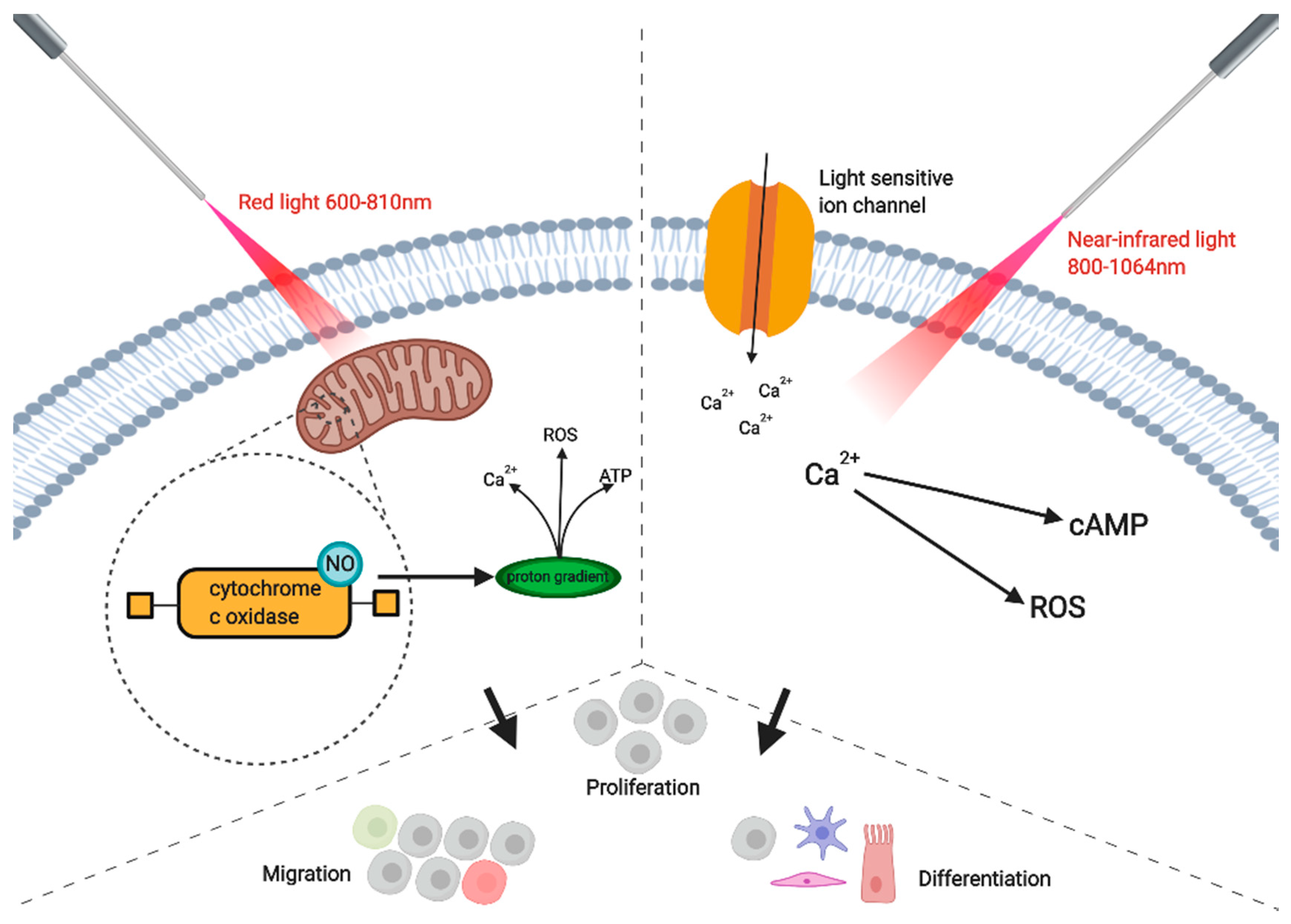
This image is property of www.mdpi.com.
7. Case Studies
Case studies provide valuable insights into the real-world application and efficacy of photobiomodulation. Here are a few examples:
7.1 Photobiomodulation for Chronic Pain Management
A case study involving a patient with chronic low back pain demonstrated significant pain reduction and improved function following photobiomodulation treatment. This case highlights the potential of photobiomodulation as a non-invasive and drug-free option for chronic pain management.
7.2 Photobiomodulation for Wound Healing
In a case study involving a patient with a non-healing diabetic foot ulcer, photobiomodulation treatment was found to promote wound healing and prevent infection. This case showcases the effectiveness of photobiomodulation in facilitating the healing process of challenging wounds.
7.3 Photobiomodulation for Sports Performance Enhancement
A case study examining the effects of photobiomodulation on athletic performance and recovery in a professional cyclist demonstrated improved muscle recovery, increased power output, and faster fatigue resistance. This case illustrates the potential of photobiomodulation as an adjunctive therapy for sports performance enhancement.
8. Photobiomodulation in Veterinary Medicine
Photobiomodulation is also gaining recognition and acceptance in veterinary medicine. It is utilized to alleviate pain, promote wound healing, and improve mobility in animals. From treating arthritis in dogs to facilitating post-surgical recovery in horses, photobiomodulation offers a valuable treatment option for our furry companions.
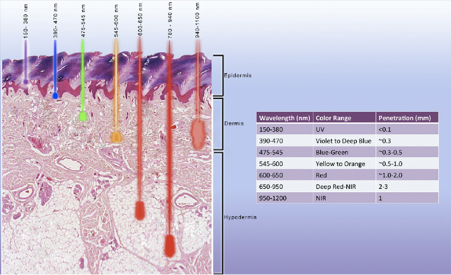
This image is property of images.squarespace-cdn.com.
10. Conclusion
Photobiomodulation is a powerful therapeutic approach that harnesses the beneficial effects of light energy. It has a wide range of applications, from pain management and wound healing to skin rejuvenation and neurologic conditions. Photobiomodulation devices, such as lasers and LED therapy, offer versatile treatment options with varying penetration depths. While photobiomodulation is generally safe, proper safety considerations should be followed. As research in this field continues to advance, photobiomodulation holds great promise for improving the quality of life for individuals and animals alike.

